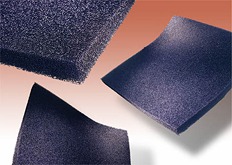cmcsales@ppg.com

PIM Reduction

PIM Reduction
 Smart phone and tablet PCs claim huge data bandwidths and wireless network operators must ensure subscribers’ data demand is sufficiently satisfied. Research conducted by CISCO in 2011 found that compared to a regular mobile phone, smart phones require twenty-four times the data bandwidth. Tablets have an even higher demand: they require 122 times the data bandwidth of standard mobile phones. Wireless network operators are upgrading their networks to LTE in order to satisfy the massive data hunger.
Smart phone and tablet PCs claim huge data bandwidths and wireless network operators must ensure subscribers’ data demand is sufficiently satisfied. Research conducted by CISCO in 2011 found that compared to a regular mobile phone, smart phones require twenty-four times the data bandwidth. Tablets have an even higher demand: they require 122 times the data bandwidth of standard mobile phones. Wireless network operators are upgrading their networks to LTE in order to satisfy the massive data hunger.
Passive Inter Modulation (PIM) has existed since two or more frequencies were combined in one RF path. PIM is an unwanted effect caused by passive components. Since they are passive, one would expect a perfectly linear behavior. In reality, every single passive component comes with a certain degree of non-linearity.
Indeed, any component generates PIM.
This is of little concern if only one frequency at a time is transmitted; as soon as two or more frequencies share the same RF path, PIM avoidance becomes very critical, and PIM can be caused by the fences, metal flashing, and other objects located on the rooftops where cell sites are often installed in urban settings.
Designing low PIM into modern wireless high speed data networks is paramount for bandwidth optimization and maximum quality of service. Cuming Microwave offers PIM reduction materials for both isolation between antennas and reflectivity from metal surfaces:
Click the links below to learn more about each standard product.
- 700 MHz-3 GHz Reflectivity Foam C-RAM PIM-465
- 700 MHz-3 GHz Flame Retardant Reflectivity Foam C-RAM PIM-465 FR
- 700 MHz-3 GHz Isolation Foam C-RAM PIM-645
- 700 MHz-3 GHz Flame Retardant Isolation Foam C-RAM PIM-645 FR
